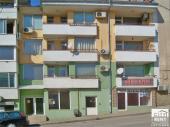|
| Autumn archeological season in Roman fortress of Sostra |
|
|
 Sostra Fortress in Northern Bulgaria was a fortified military camp erected on a strategic road for the Roman Empire starting from the Danube village of Gigen (the ancient city of Ulpia Oescus). The route cut across the Danubian Plain, went through present-day Troyan Pass in the Balkan Range and led to Philippopolis, that is present-day Plovdiv in Southern Bulgaria. Standing on the northern slopes of the Balkan Range, the fortress is very well-preserved. Since 5 century, when the Huns invaded the place, it hasn’t had new inhabitants. Its walls soar at a height of 2-3 meters.
Sostra Fortress in Northern Bulgaria was a fortified military camp erected on a strategic road for the Roman Empire starting from the Danube village of Gigen (the ancient city of Ulpia Oescus). The route cut across the Danubian Plain, went through present-day Troyan Pass in the Balkan Range and led to Philippopolis, that is present-day Plovdiv in Southern Bulgaria. Standing on the northern slopes of the Balkan Range, the fortress is very well-preserved. Since 5 century, when the Huns invaded the place, it hasn’t had new inhabitants. Its walls soar at a height of 2-3 meters.
The archeological season in Sostra opened on 23 September with a spectacular light show called Sparks from Eternity. It featured actors dressed up as Roman centurions and soldiers. In front of some 600 people, they recreated ancient rituals, such as the change of guards at the main gate. The motto of this year's archeological expedition was “To unravel the history of the Sostra Castles”. In the words of Dr. Ivan Hristov, there are 3 fortresses.
“For some 250 years, the Roman provincial government built 3 fortified camps, which were almost one on top of the other”, he says. “The construction of the earliest camp started in the second half of the 2 century during the rule of Emperor Anthonius Pius. The other constructions took place during the times of Septimius Severus and Emperor Galen. The three fortresses were intended to be the core of the Roman support military unit, which was under the rule of the governor of Dolna Mizia Province. The number of people in the unit varied from 500 to 1000 people. The unit guarded the route that was important to the Roman Empire and perhaps quelled the uprisings of the locals. We've got records claiming that during the time of Anthonius Pius the people rioted against some tax and administrative changes carried out by the Roman Empire.”
Archeologists have also found in Sostra soldier barracks of a supporting military unit. Such facilities have only been discovered in the big camps in the Danube Roman towns of Nove and Dorustorum. In those shelters, soldiers wound spend the night and keep their military equipment. The military barracks in Sostra, which were made from wood, had solid tile-covered roofs and well-shaped floors. The length of the rooms varied from 40 to 100 meters. They stood in several lines, some 7 meters away from the rampart. At the end of each barrack, there was the lodging of the officer in charge of the respective unit. Interestingly, this kind of construction was popular with the entire Roman Empire at the time. Back to Mr. Hristov on the items discovered during the recent excavations.
“We’ve got fragments of votive tablets of deities venerated by legionaries as well as various bronze and silver coins. We’ve found many bronze coins minted in Marzianopolis, present-day Devnia in Northeastern Bulgaria. We’ve also got accessories used for clipping soldiers’ mantles. We collected a large number of animal bones. Professor Lazar Ninov agreed to examine them. He is a leading expert in the research of bone remains from the Archeology Institute at the Bulgarian Academy of Sciences. We can safely say that the Roman soldiers were well fed by their commanders. The bones we’ve already identified seem to have belonged to domestic animals, deer, hinds, boars, etc. In 4 century, the mussels from the Osam river became part of the soldiers’ diet. A somewhat more detailed research could cast even more light on the typical foods back then”.
Next year Bulgaria is hosting a prestigious scientific forum on the Roman Empire’s borders. Sostra is among the sites that are going to be visited by some 400 scholars from all over the world.
http://bnr.bg |
| Friday, Feb 07, 2014 |
|
|
|
|
| » RENTALS |

|
|
|
| Shop / Retail |
€ 400 |
|
| Location: |
Veliko Tarnovo |
|
|

|